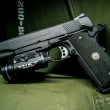One of the most daunting things when I first started looking for a gun was…what size bullet to get?
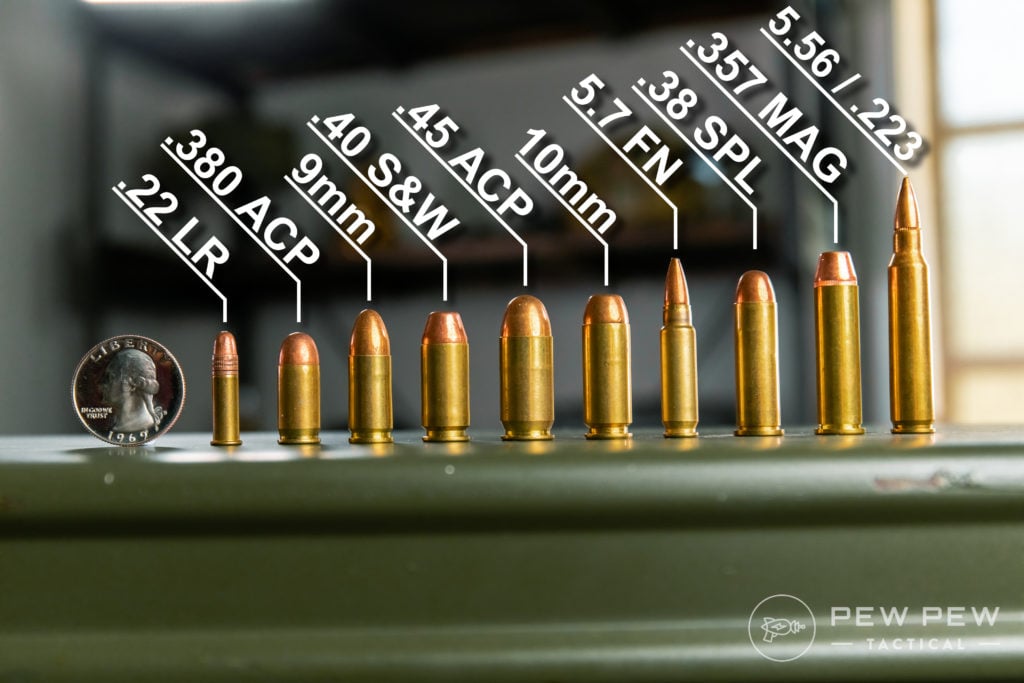
Things got even crazier when I started to look at rifles…
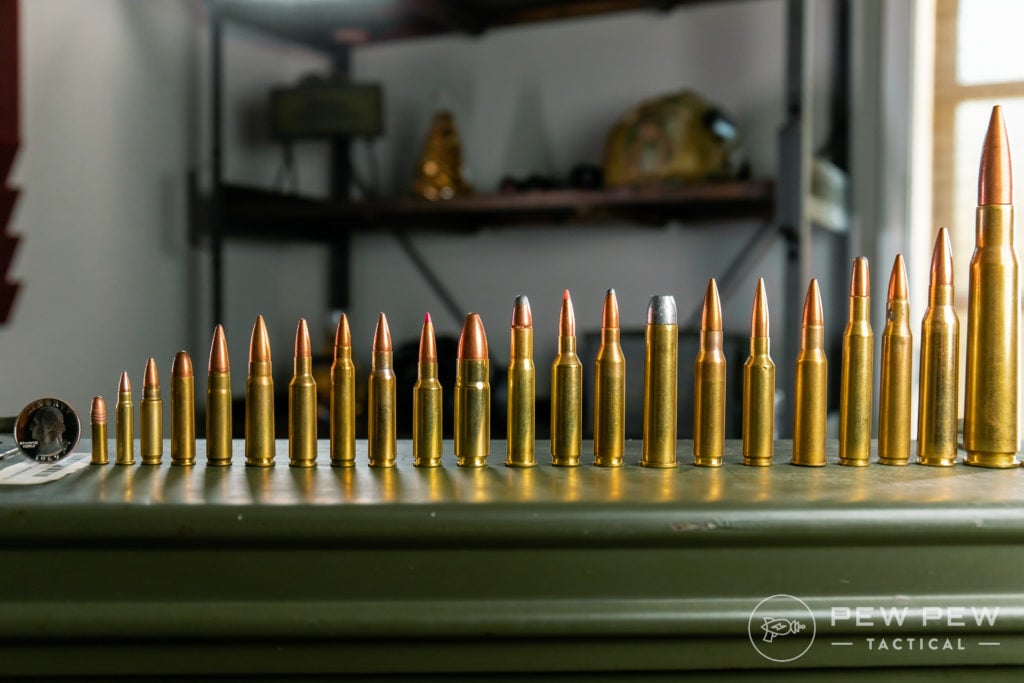
But don’t worry…we’ll be covering some of the most popular handgun, rifle, and shotgun calibers out there.
As well as the benefits and weaknesses of each.
Then we’ll follow up with some bullet terminology and the different types of bullet tips (hollow point, etc), how shotgun shell sizes work, and a breakdown of the components of a round.
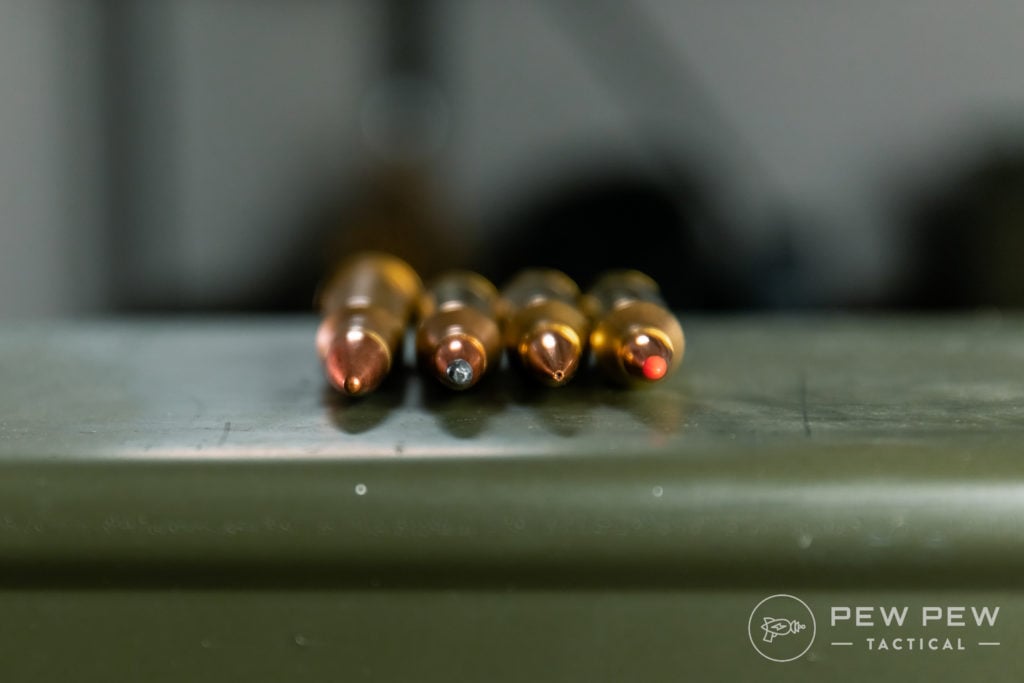
By the end, you’ll be a bullet pro!
Table of Contents
Bullet Size & Caliber
First!
For guns, “caliber” means the diameter of the barrel and thus the diameter of the bullet that is going through it. Usually in inches or mm.
Also for terminology’s sake, “bullet” just means the metal projectile, while the entire thing is called a cartridge.
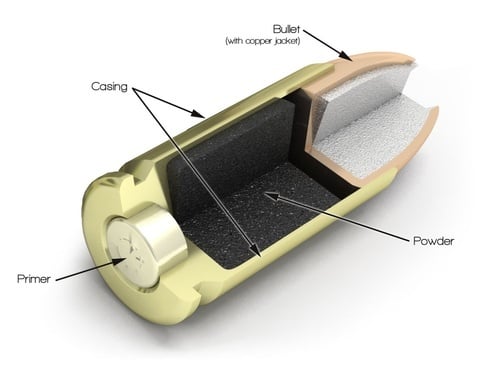
Here are some common 9mm bullets.
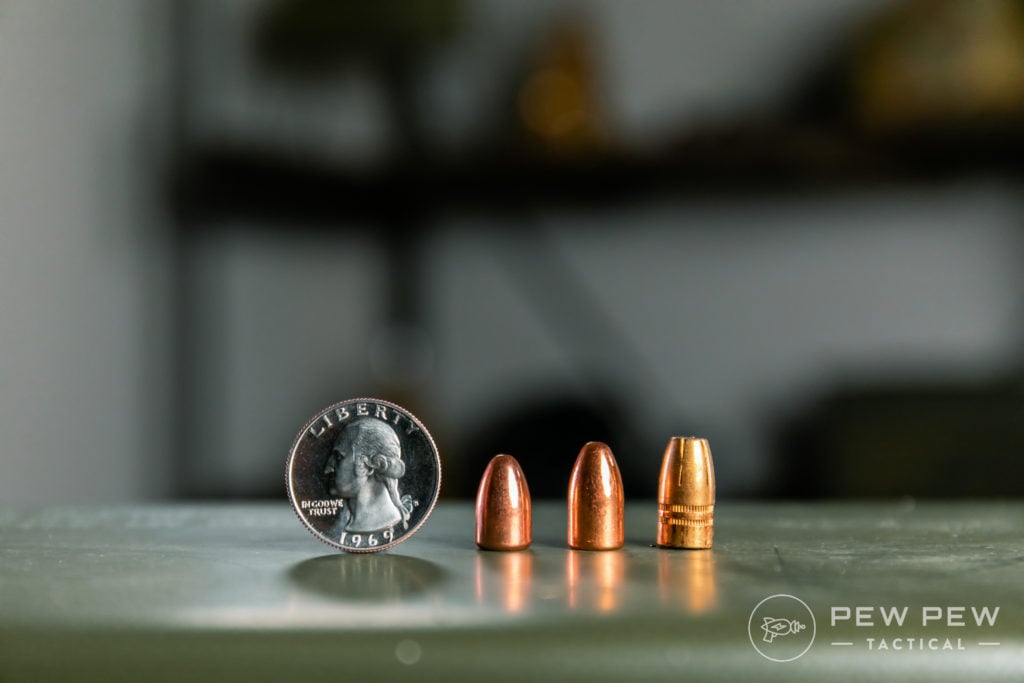
If you want to jump ahead, check out our suggestion for the Best Places to Buy Ammo Online.
Now what you’ve been waiting for…
Rimfire vs. Centerfire
The first differentiator is between rimfire and centerfire cartridges.
The rimfire’s primer is built into the rim while the centerfire cartridge has the primer in the center. Pro tip…if you can see a circle in the middle…it’s a centerfire cartridge.
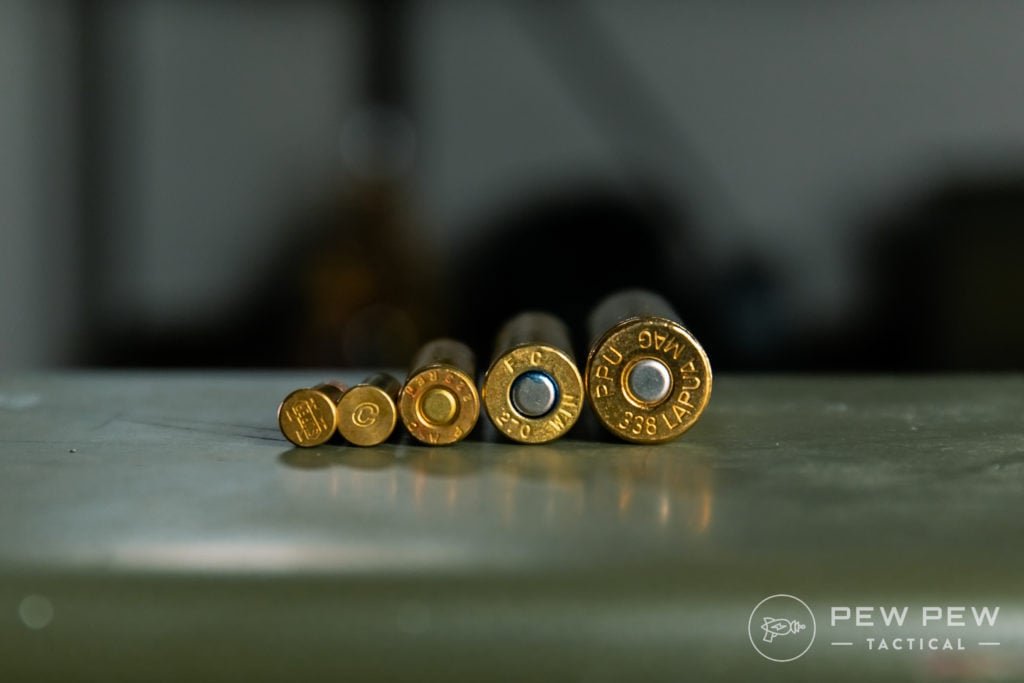
Rimfires are extremely cheap (a few cents each) and the .22 LR is the most popular rimfire caliber.
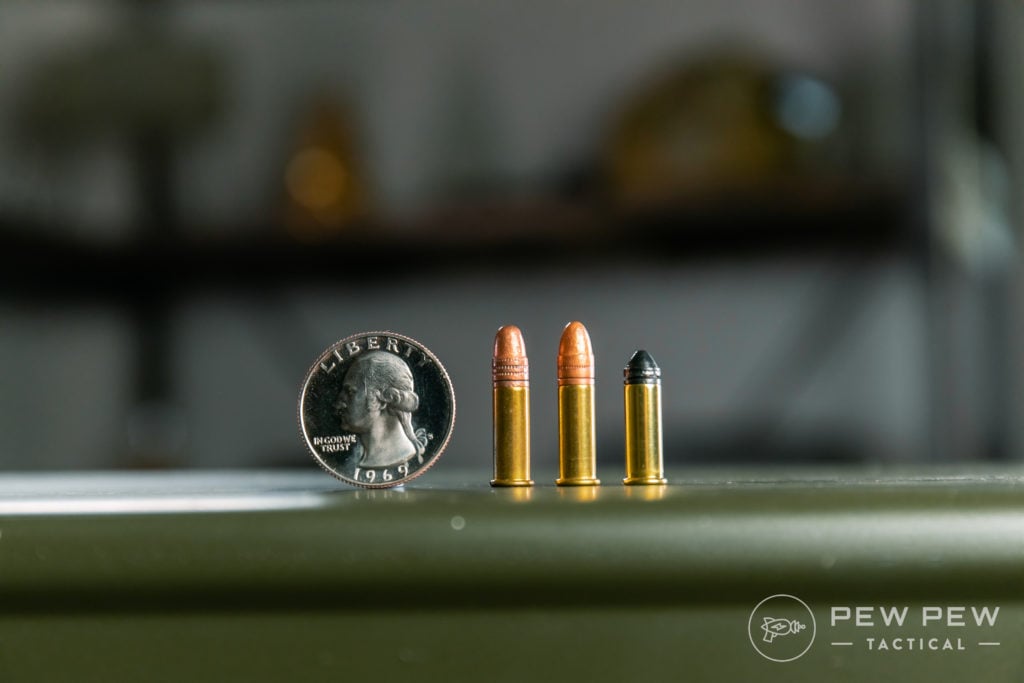
This animation shows how the firing pin hits the primer in a cartridge.
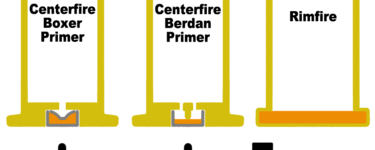
Here are some expended casings from a rimfire vs centerfire.
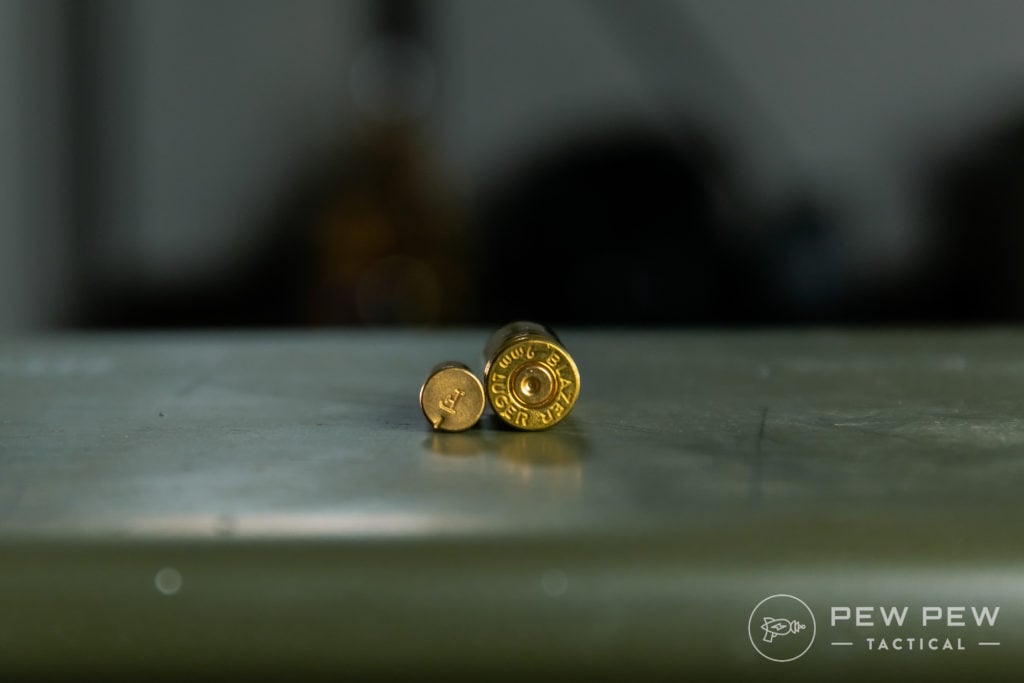
For even more differences, see our article on Rimfire Ammo or familiarize yourself with How Guns Work.
Common Bullet Calibers
To make things a little more confusing, there’s a mixture of measurements in inches and millimeters.
There’s also a unit of weight called a “grain” which is used to denote the weight of bullets and gunpowder. A “grain” is really small since 7,000 grains make up one pound.
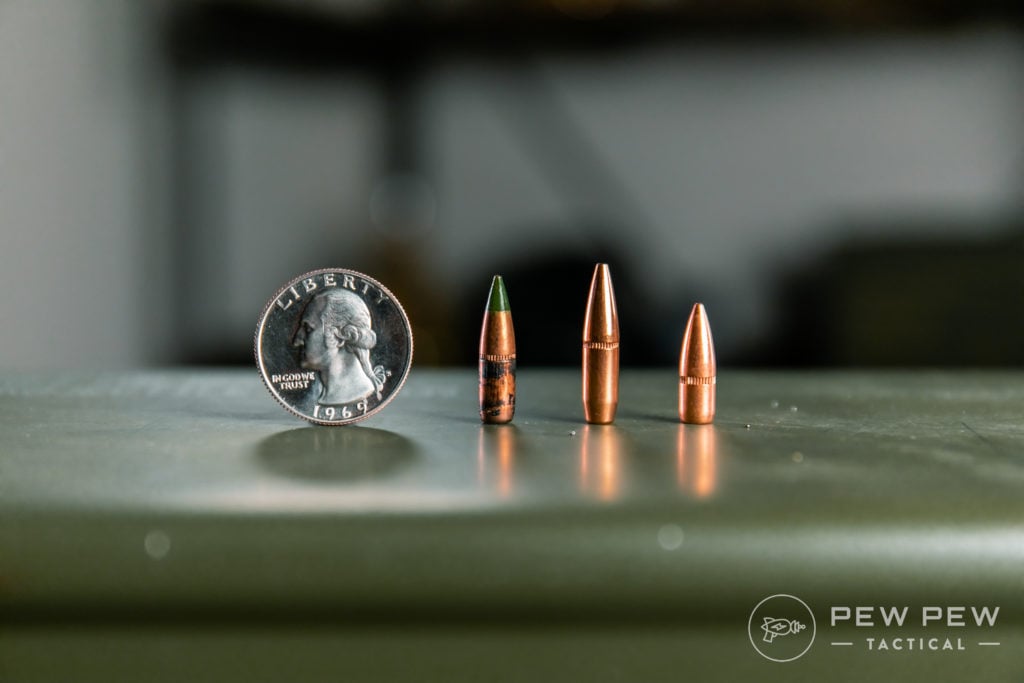
Now let’s go through some!
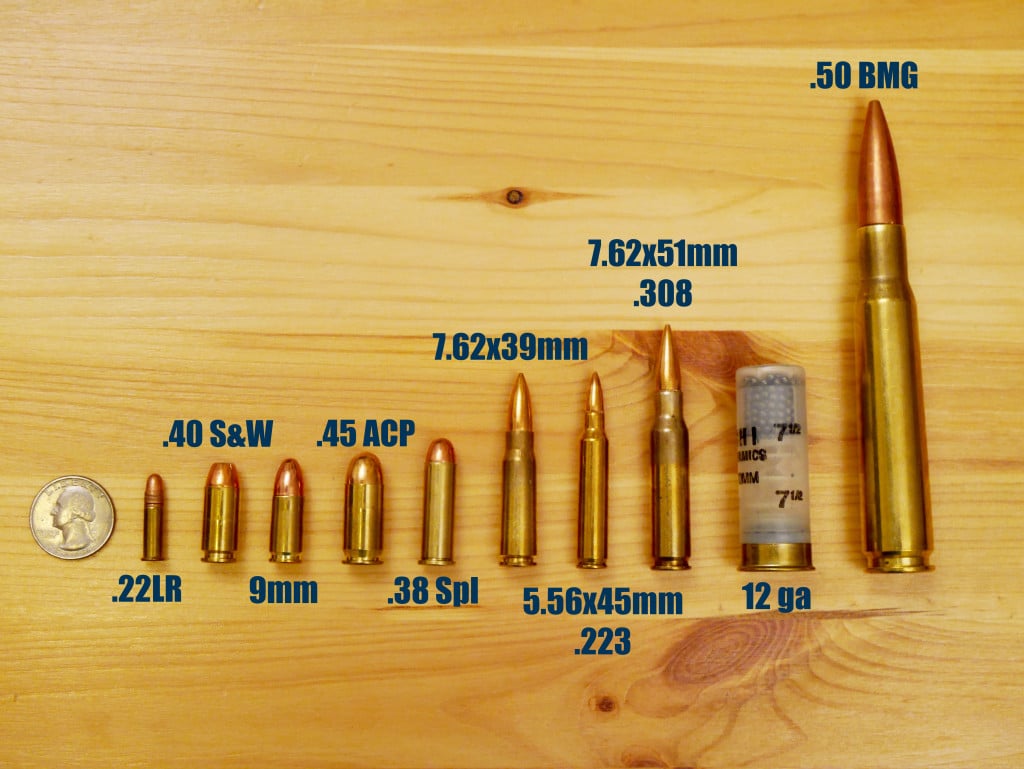
.22 LR
The “twenty-two” long-rifle is the most common caliber in terms of units sold.
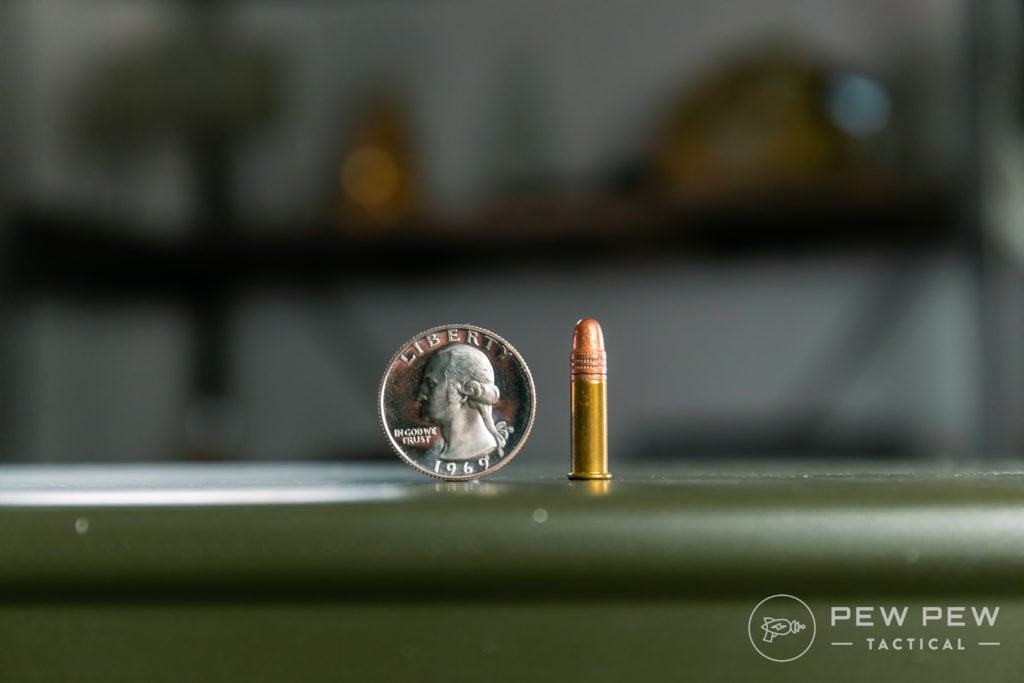
It has a bullet weight of around 30 to 40 grains and is extremely mild shooting in both pistols and rifles.
The recoil is almost non-existent which makes it a great starter round for someone who has never shot a gun or is uncomfortable with the noise.
The low price of the bullets is also great for learning sight pictures.
It is traditionally the starting caliber for shooters. These things are only a few steps up from a pellet gun round…especially in a rifle (Ruger 10/22) shown below.
They can kill, don’t get me wrong, but they’re mostly for killing rats, snakes, and birds. They’ll kill an attacker for sure but it might take a shot or six.
For more info:
.380 ACP
Now we’re getting into slightly beefier sizes.
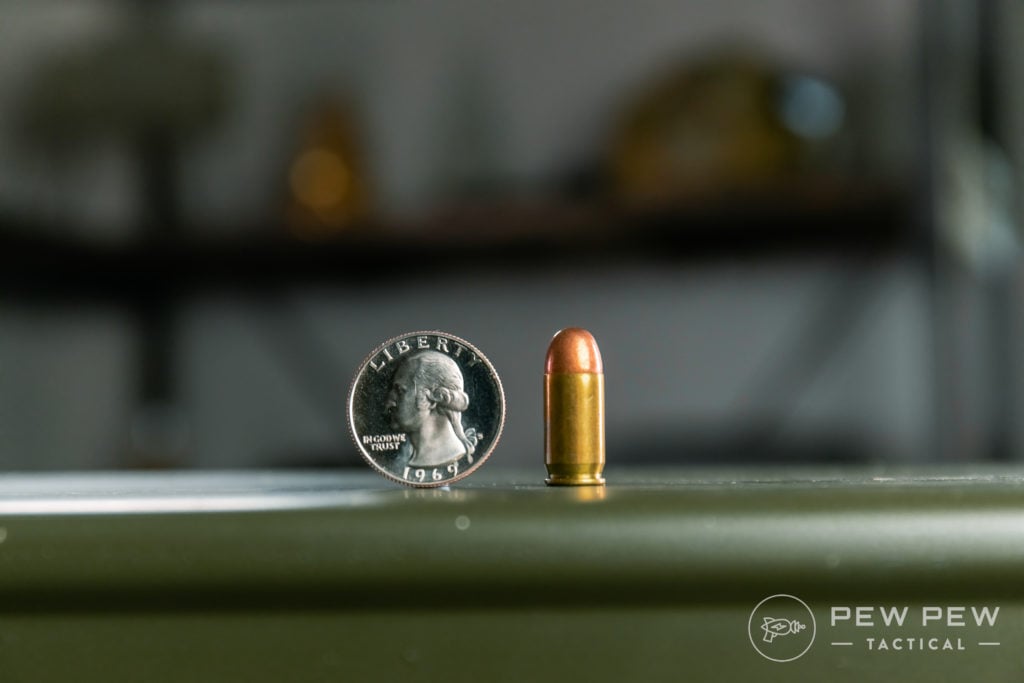
Personally, I would never use a gun with anything smaller than a .380 as my primary carry weapon.
Sometimes called a “9mm Short”, it has seen a major boost in popularity recently thanks to the various “pocket pistols” that have come on the market.
This bullet has relatively low recoil and, at close range, good penetration.
Gun author Massad Ayoob once said of the .380, “Some experts will say it’s barely adequate, and others will say it’s barely inadequate.” This is a low power round.
Because of the nature of the bullet and the guns that shoot it, it’s going to be relatively useless beyond close-ish range.
For more info:
9mm
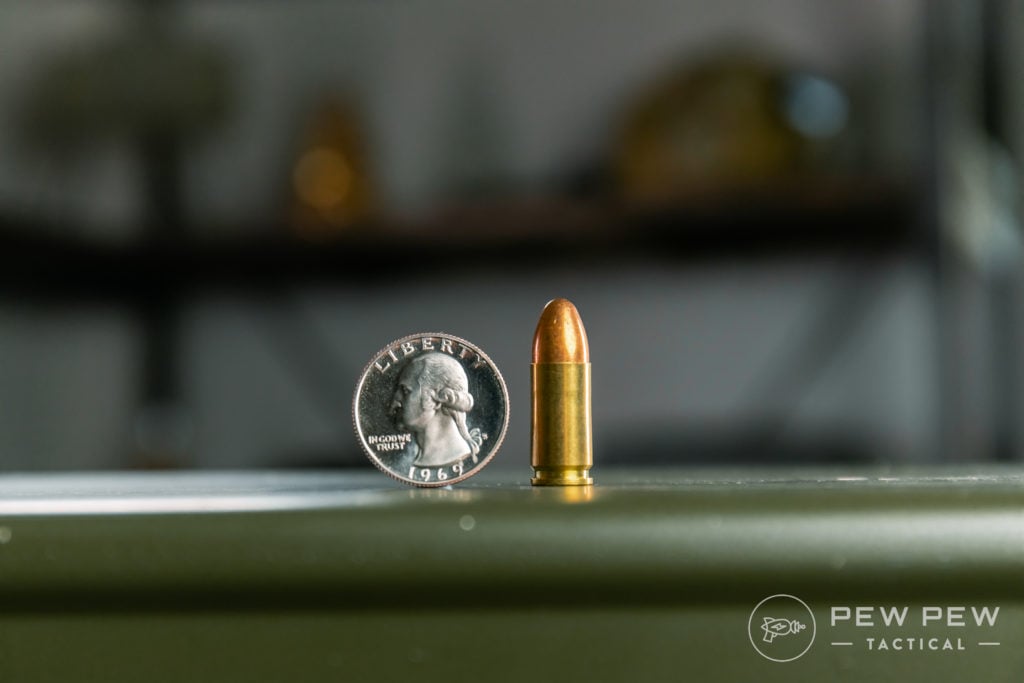
This pistol round is officially known as the “9x19mm Parabellum” or “9mm Luger” to distinguish it from other 9mm rounds. But you will be fine just saying “nine millimeter” or “nine mil” for those in the know.
9mm is my personal favorite and if there was a “Goldilocks” round, this would be it.
The very first gun I bought was a 9mm.
They’re fun at the range. They’re good for defense.
Believe it or not…or actually believe it because it’s true…the 9mm bullet is the same diameter as the bullet used in the .380 and the .38 Special.
The difference between the three is the amount of gunpowder behind it and possibly bullet weight.

It is the standard round for NATO countries and the majority of police forces around the world.
It is mild shooting, can vary in weight from 115 to 147 grains, and has varying stopping power based on the type of bullet (hint, go with hollow points).
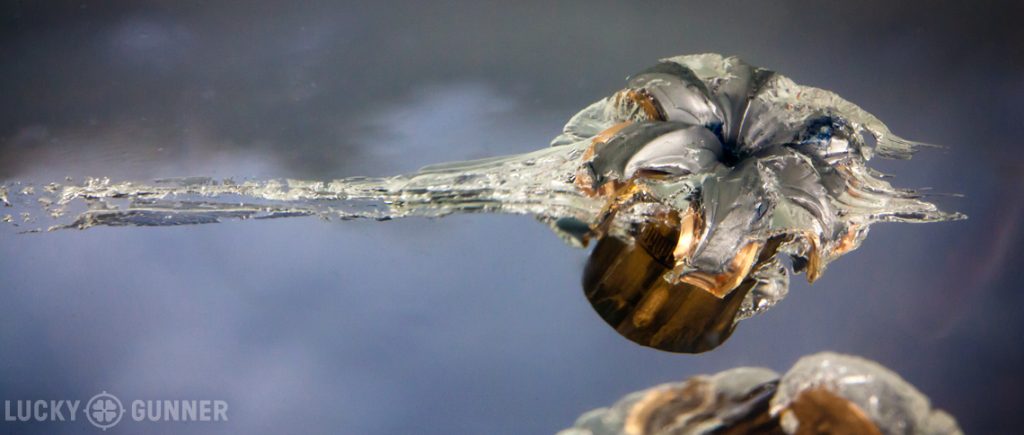
Many, many guns use this size as well. A compact 9mm gun can be used for concealed carry. Most of the guns that use this size can hold on average 15 to 17 rounds in the magazine.
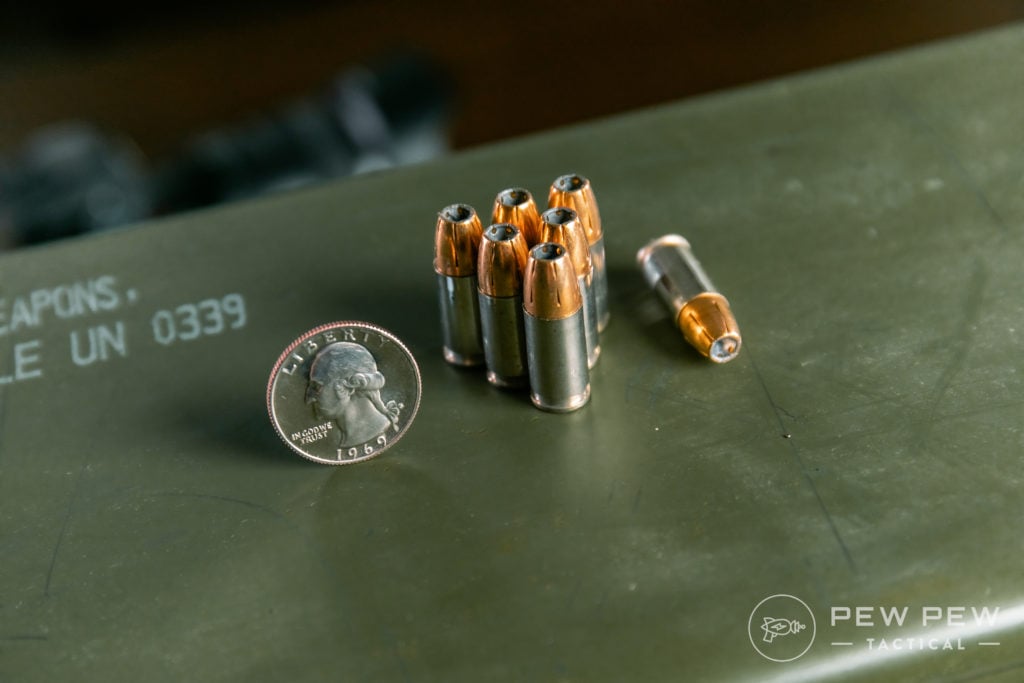
And now…there’s been a huge rise in popularity of Pistol Caliber Carbines (or PCC). Get the nice ergonomics of a rifle but with the price and hollowpoints of the 9mm.
For more info:
.40 S&W
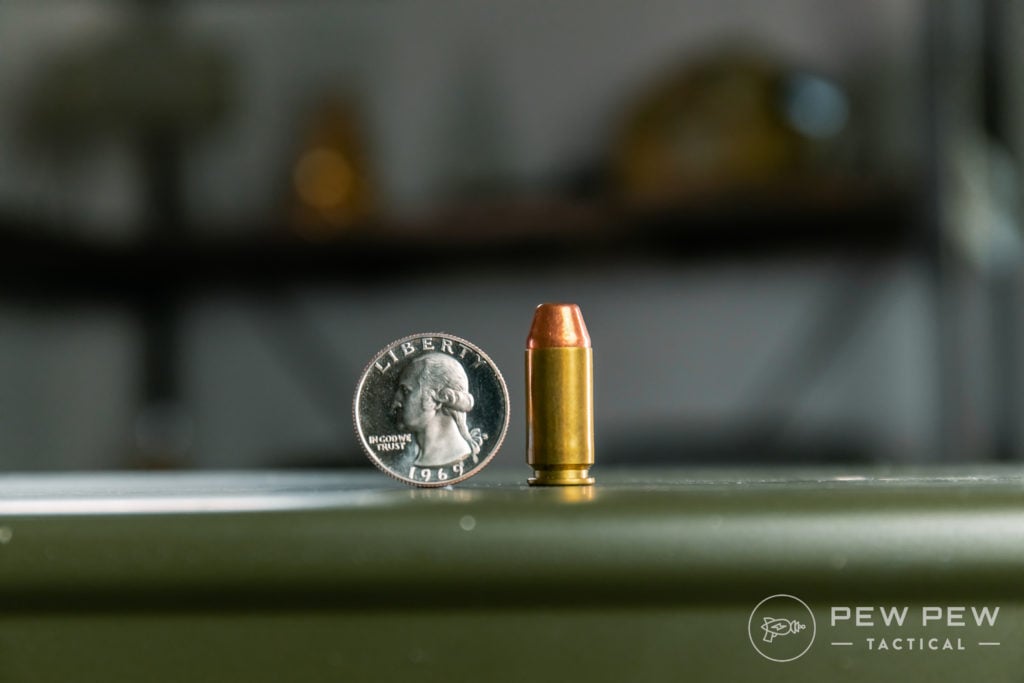
Remember how I said the 9mm was the “Goldilocks Round?” If that’s the case then the .40 is her big, angry, whiskey-drinking sister.
Originally designed for the FBI as a reduced 10mm cartridge and popular with other law enforcement agencies ever since. More kick when compared to the other popular handgun cartridge, the 9mm. Weights of the bullet can vary from 155 to 165 and 180 gr.
Note that the FBI recently decided to move back to the 9mm since agents are able to shoot more quickly and more accurately with 9mm compared to the .40 S&W.
For more info:
.45 ACP
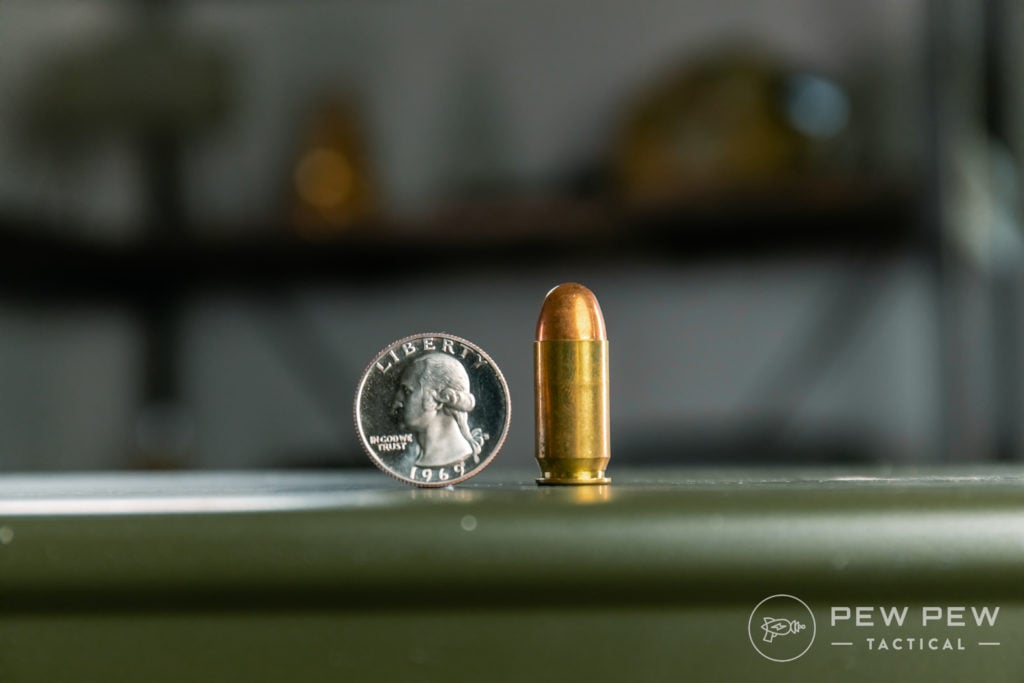
Designed in 1904 by Mr. John Browning himself for the famous 1911 pistol, this round has one heck of a history.
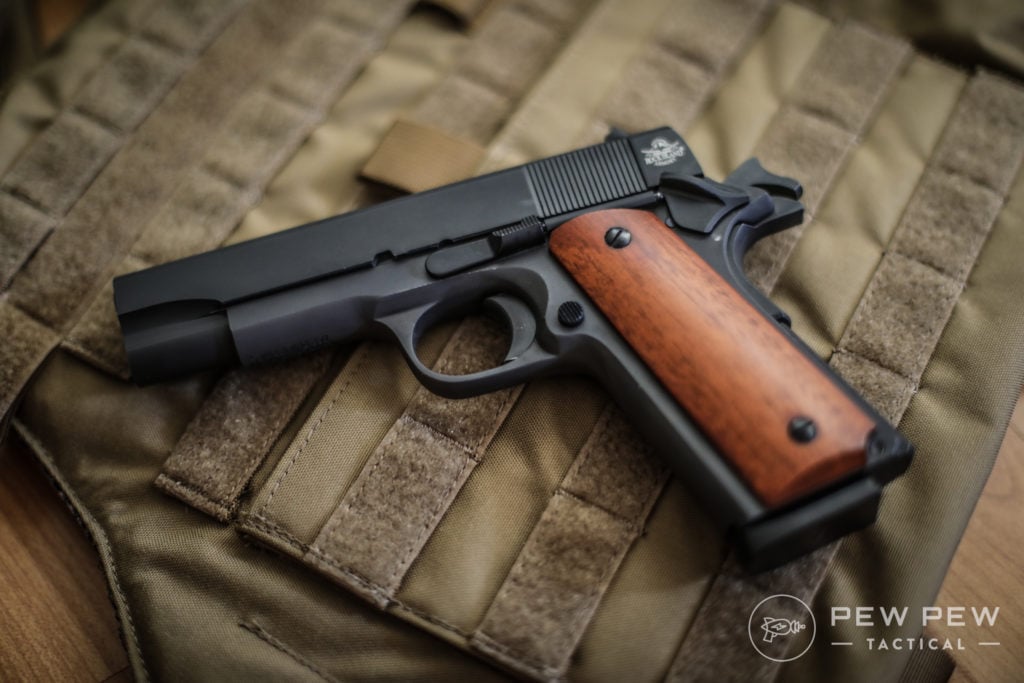
This thing is a big bullet with stopping power to spare.
The choice of many police officers and military personnel for years, the .45 caliber round has proven itself time and time again. I could probably do an entire article on just this bullet.
It has a large bullet of around 230 grains and has moderate recoil.
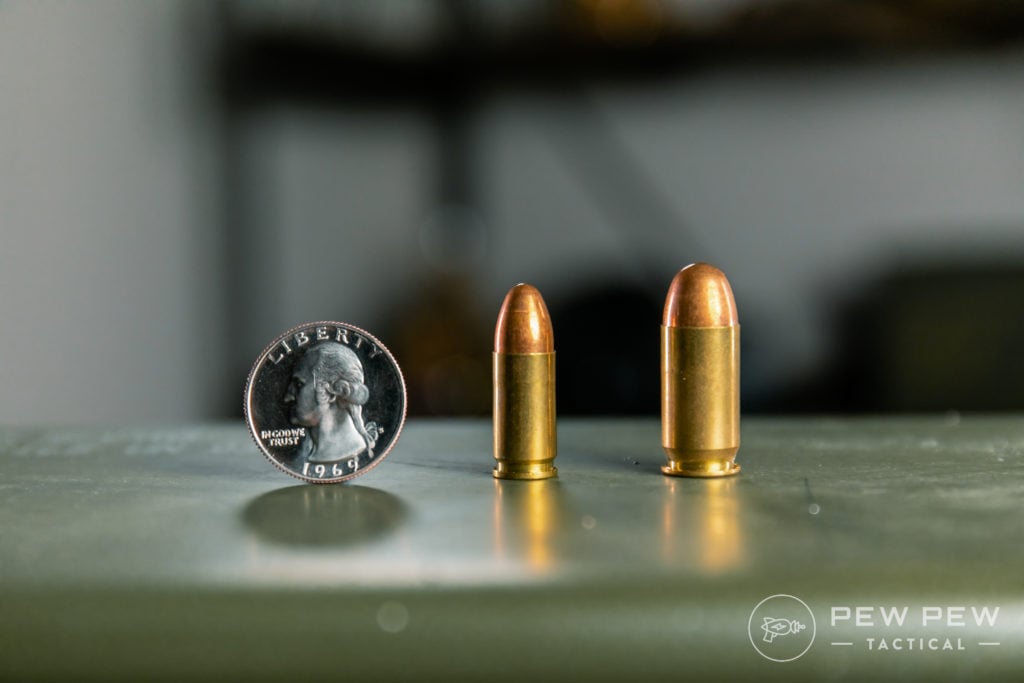
I can tell you from personal experience that this is not a round to hand to someone who’s never fired a gun before. Its stopping power is renowned and has a nostalgic following.
For more info:
.38 Special & .357 Magnum
The “thirty-eight special” is most commonly found in revolvers.
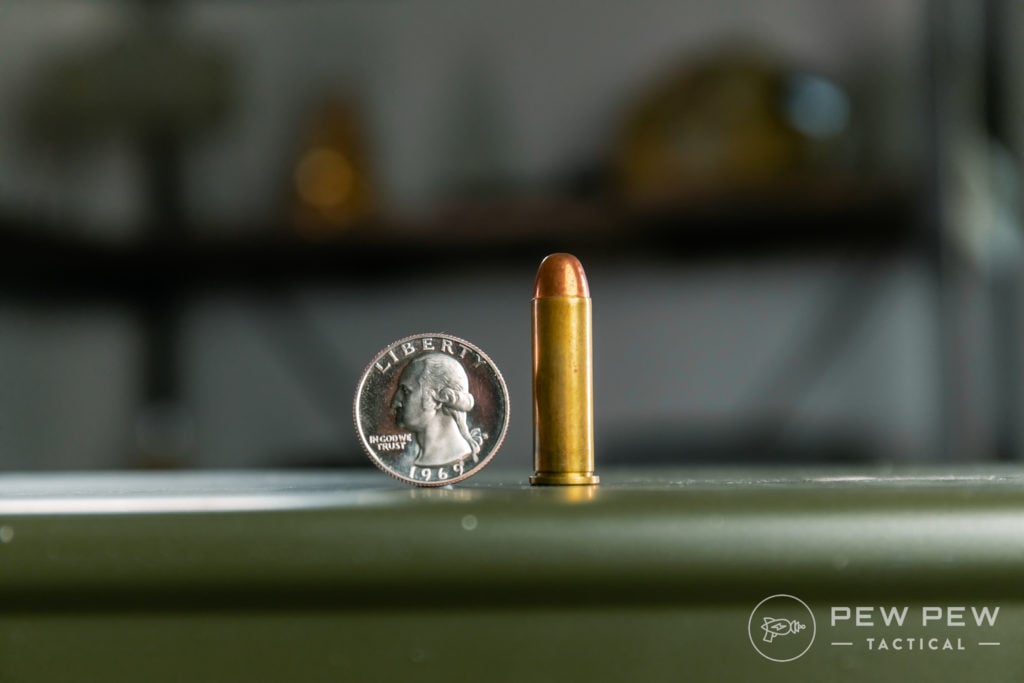
It has manageable recoil but is still quite a handful when in a very light/small revolver. It has a longer cartridge and more powder in said cartridge but it is a slower, heavier bullet than the 9mm.
The FBI used this cartridge as its standard issue for a very long time.
The .357 Magnum is identical to the round except for being slightly longer.
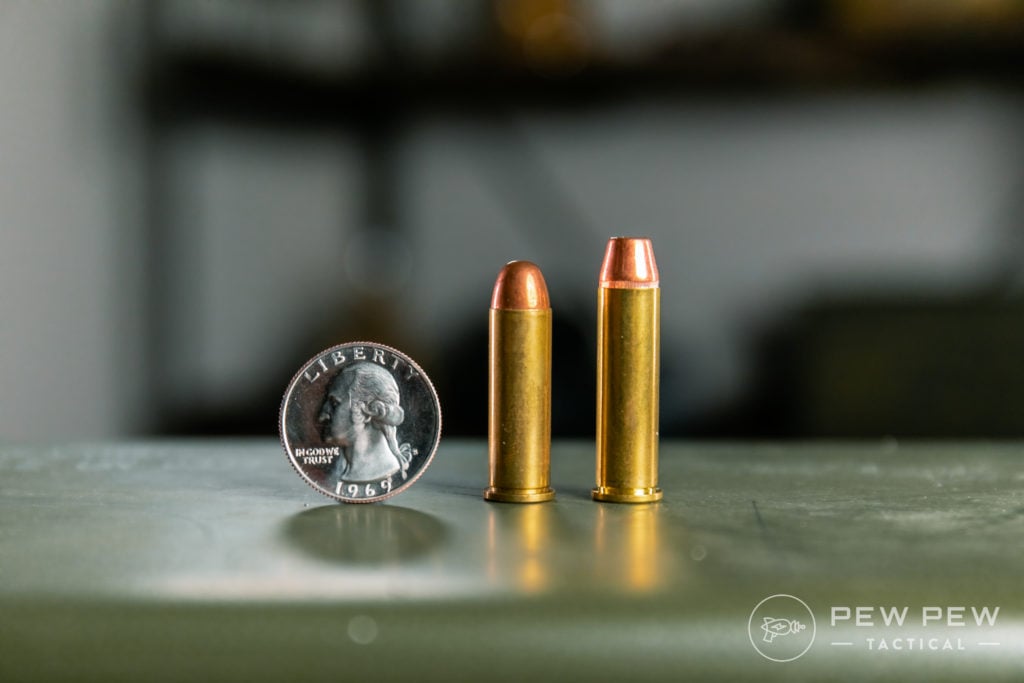
You can safely fire a .38 Special in a .357 Magnum gun, but don’t try the other way around due to size and pressure constraints.
Bullet weights vary from 110 to 132 to 158 grains.
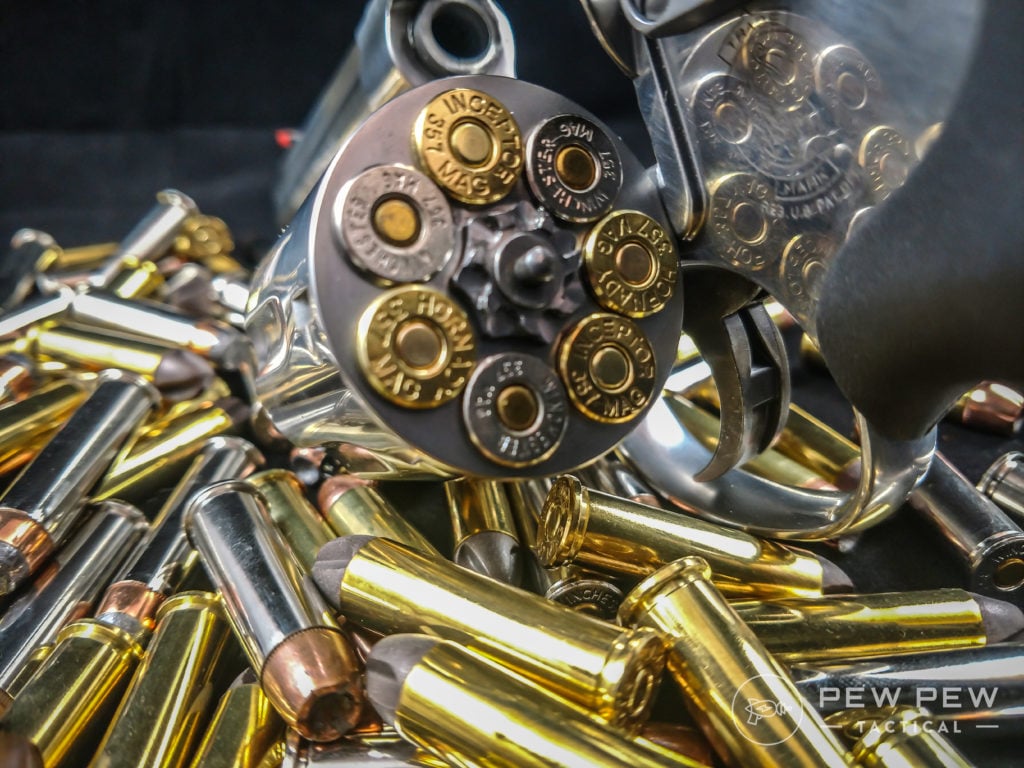
For more info:
7.62x39mm
This is the Soviet round used in the AK-47 line of rifles.
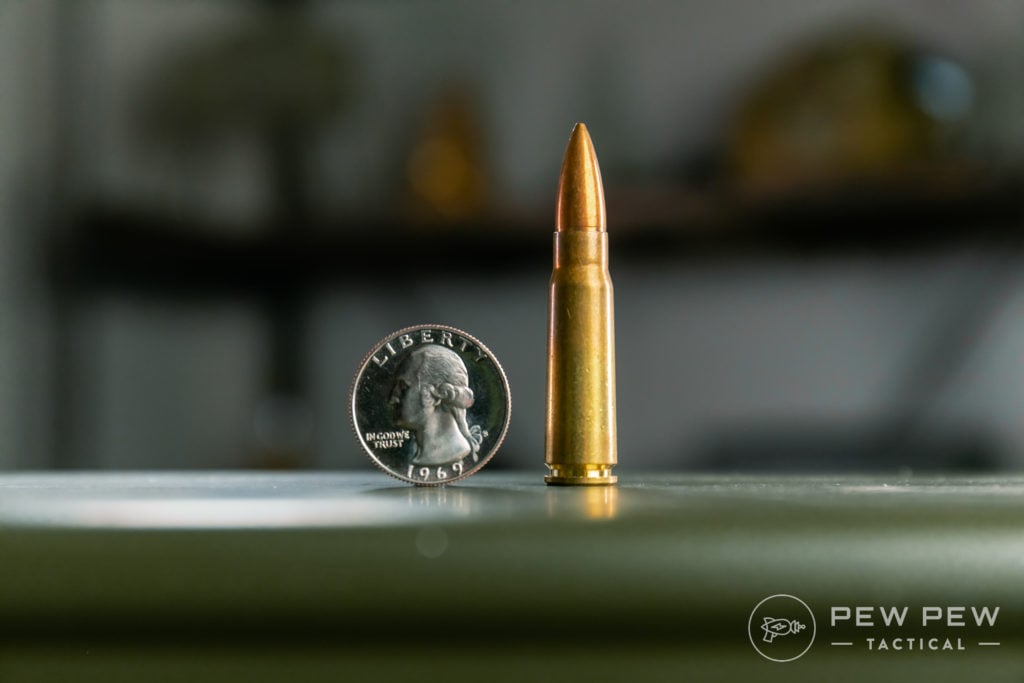
It has moderate recoil, great knockdown power, and a bullet weight of usually 123 grains.
There is a high availability of military surplus ammo which makes the round very affordable. Plus check out its bullet size vs the 5.56 coming up next…
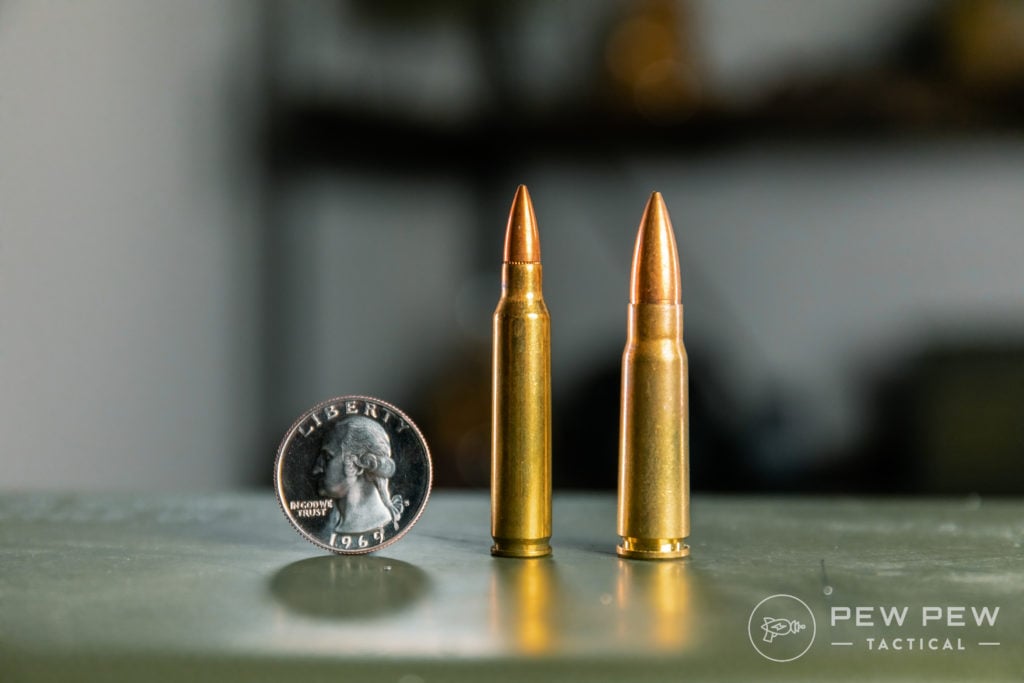
For more info:
.223 / 5.56x45mm
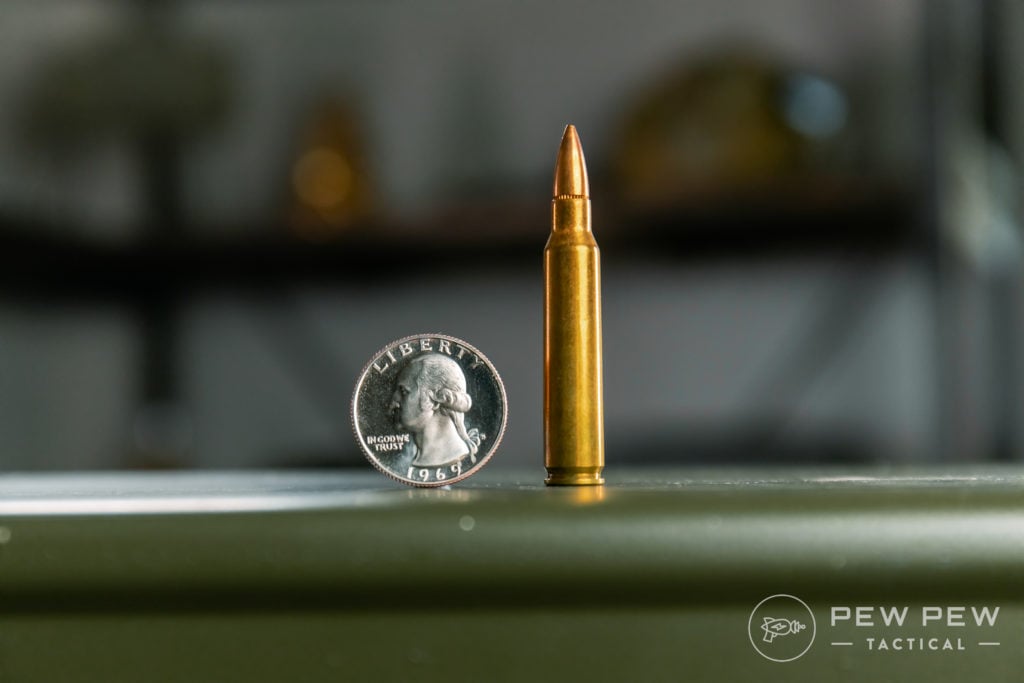
The “two-two-three” (inch) Remington has almost the exact dimensions as the “five-five-six” (mm) NATO cartridge.
The 5.56 has higher pressures than the .223, so .223 rounds can be fired in a 5.56 rifle, while 5.56 rounds should not be fired in a .223 rifle.
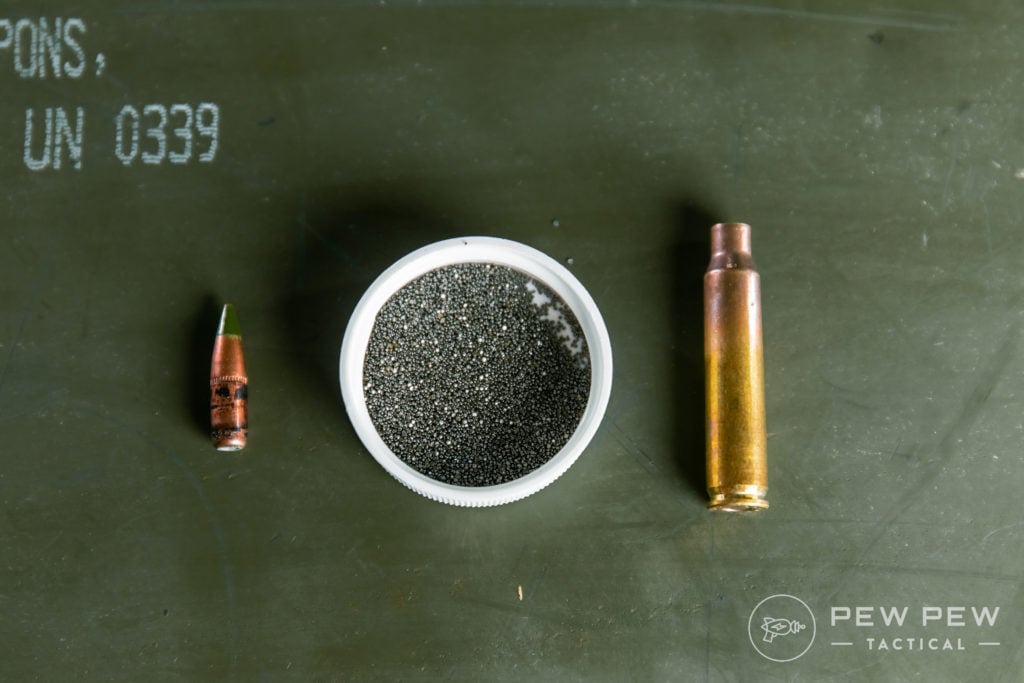
Bullets are around 55 grains and the cartridge has light recoil.
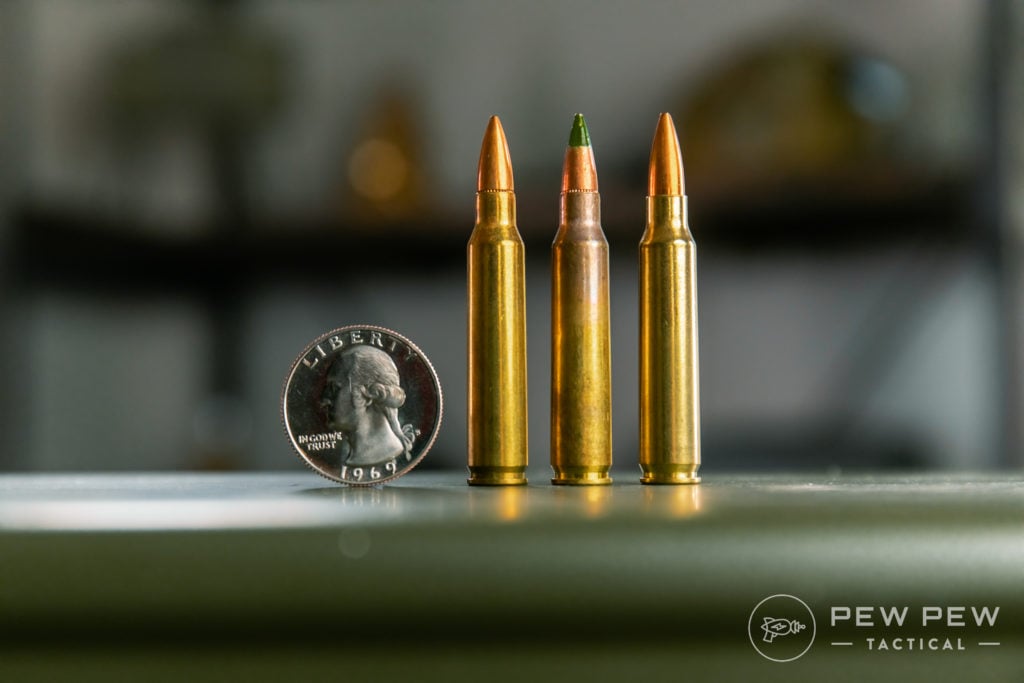
It is the ammunition used in the M16/M4/AR-15 line of rifles and there’s still endless debate on its effectiveness in combat.
For more info:
.308 / 7.62x51mm
The “three-oh-eight” (inch) Winchester is almost the same dimensions as the “seven-six-two” (mm) NATO round.
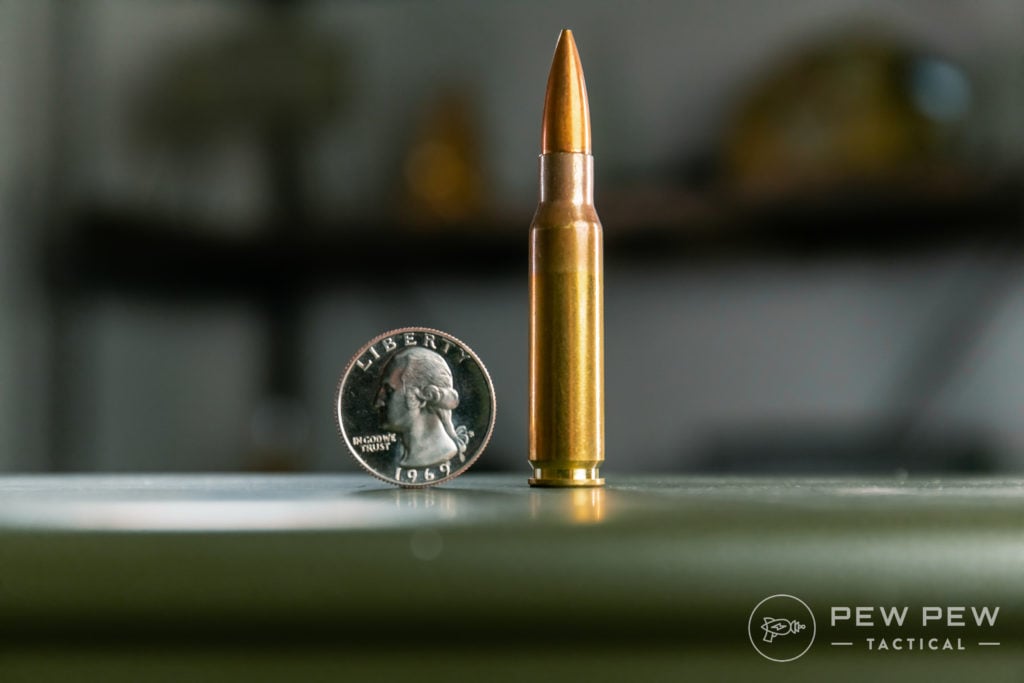
There are special considerations when mixing the rounds but unless you know what you are doing, stick with the round intended for your rifle.
It is a popular hunting round with moderate recoil, high stopping power, and a wide range of bullets available from 150 to 208 grains.
Plus…one of the most popular heavier caliber machine gun and sniper rounds for many militaries around the world.
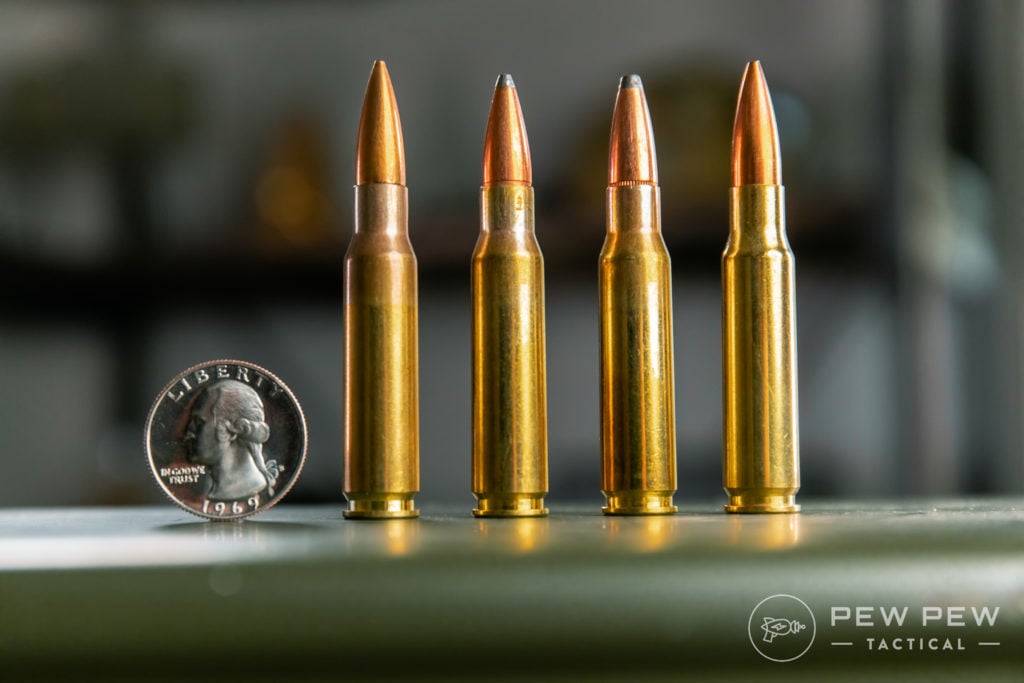
For more info:
.50 BMG
Not really common for civilians, but I just had to have it in here.
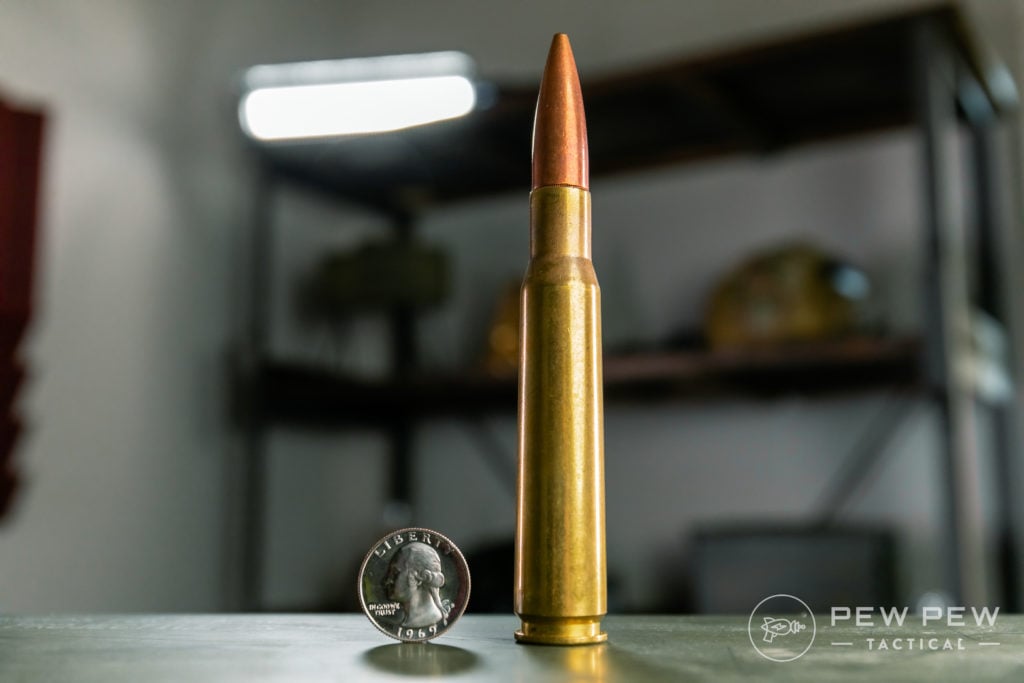
It’s huge and has huge recoil with awesome range (confirmed kills at 2,000m+), and you definitely don’t want to be on the receiving end of the bullet. 660-grains of pure stopping power.
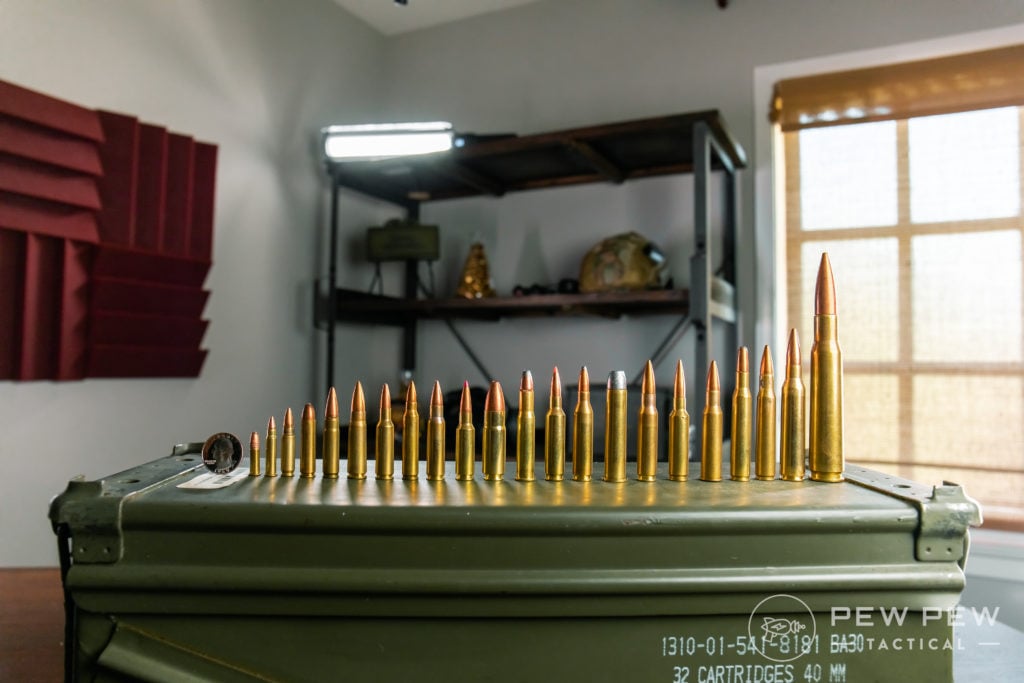
This Barrett was OK because I was standing and it had a suppressor!
Still with me?
Common Bullet Types & Terminology
Full Metal Jacket (FMJ)
This is the most common type of bullet and consists of a soft metal core, such as lead fully encapsulated by a harder metal, such as copper.
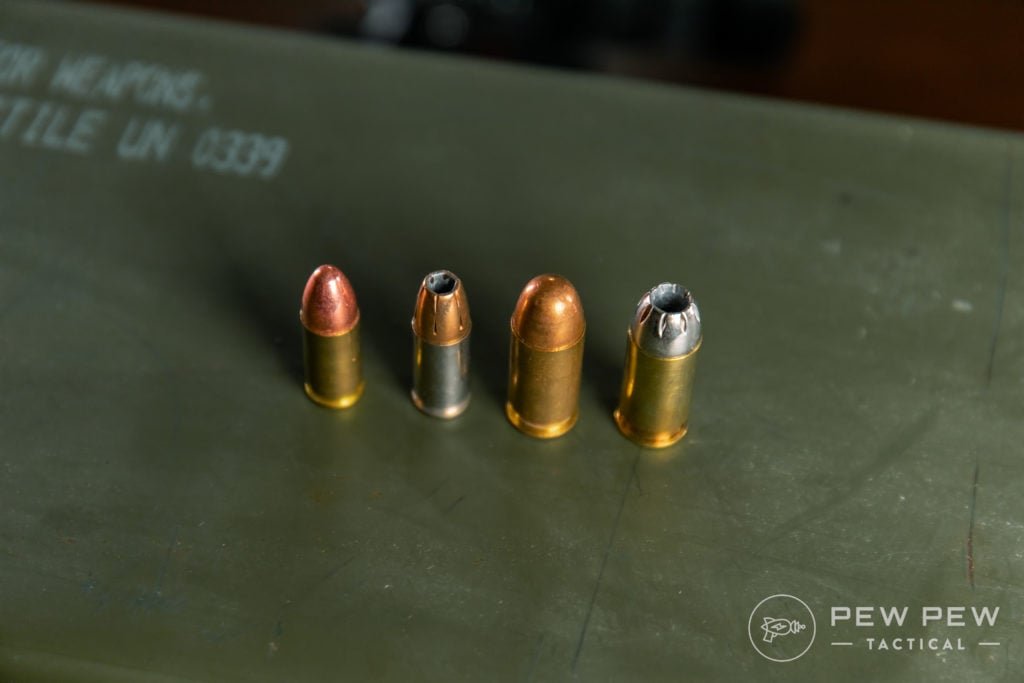
They are usually pointy, round, or even flat. Wound channels are typically small and go through a target.
Great for the range but not preferred for defensive rounds.
Hollow Point (HP)
Hollow points are made to expand once they hit something. They are the go-to round for police officers, concealed weapon carriers, and home defense guns because of their stopping power.

Open Tip (OTM)
Open-tip bullets look like hollow points since they have an opening at the top, but this is more because of their manufacturing process. The openings are too small to expand effectively.

Regular FMJ’s are created from small copper cups where the bottom of the cup becomes the tip of the bullet. Open-tip bullets are the opposite, with the bottom of the cup becoming the bottom of the bullet.
Open-tip bullets are sometimes also known as Open Tip Match (OTM) since they are preferred by long-distance shooters. The manufacturing process for open tip bullets creates a more consistent round than FMJ. Important when you’re shooting hundreds of yards!
Ballistic Tip
This is what you get when you combine the aerodynamics of an FMJ with the stopping power of a hollow point. This is a hollow point covered with (usually red) plastic to mimic the profile of an FMJ.
They are mostly used in hunting or precision shooting.
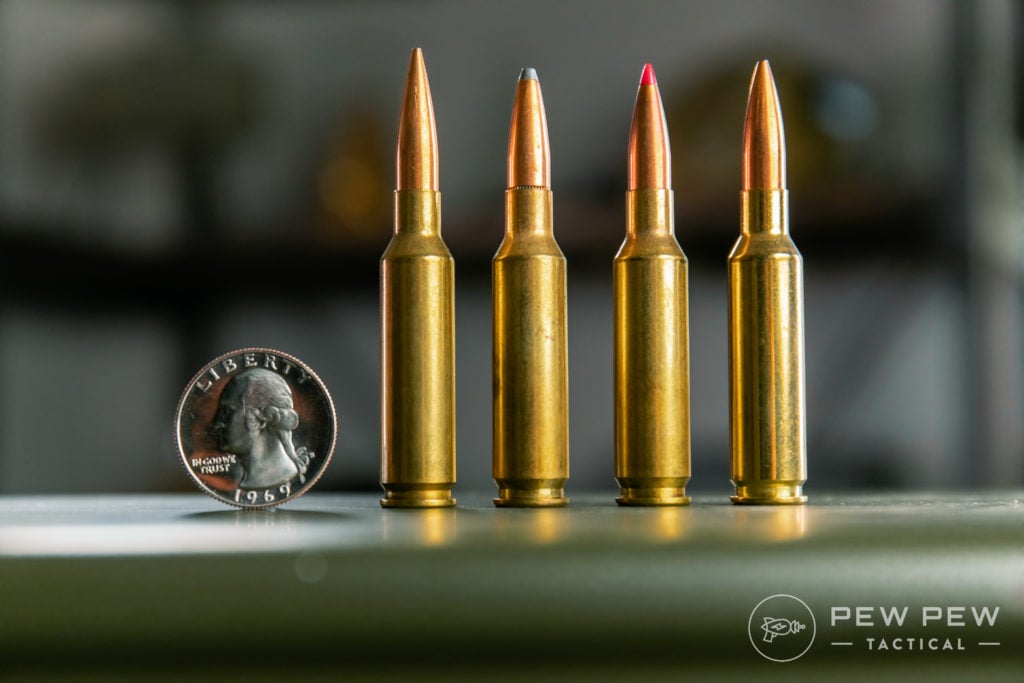
Below you’ll see that the bottoms of the bullets are more streamlined. This design is called “boat tail” and produces less drag as the bullet flies through the air. HPBT is short for “hollow point boat tail.”
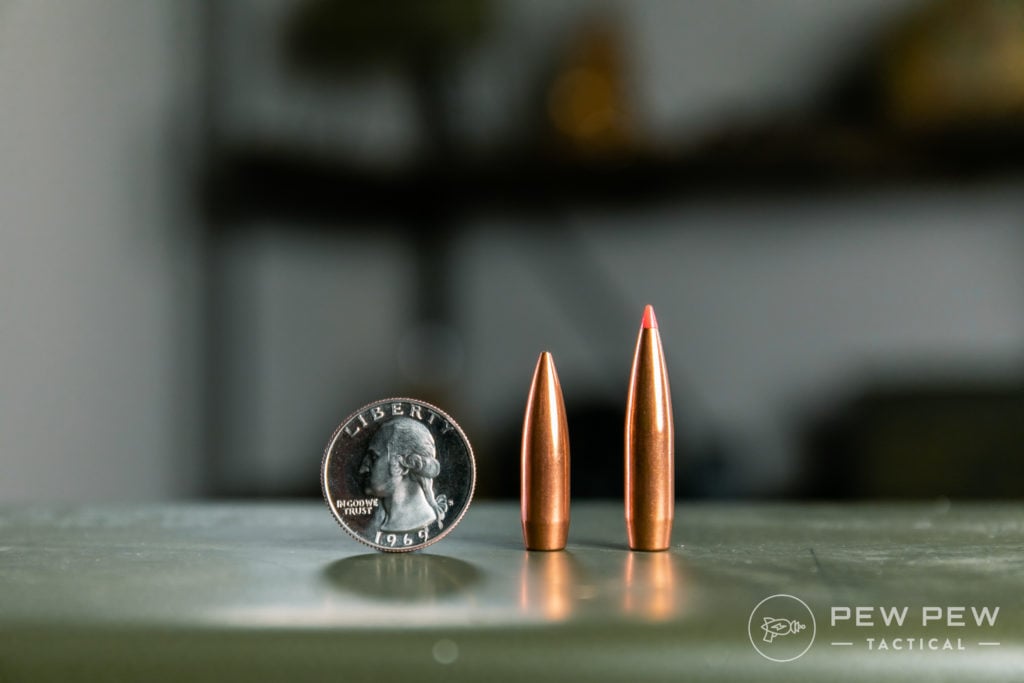
Soft Point
This is an earlier attempt to get the ballistic advantages of an FMJ with better expansion.
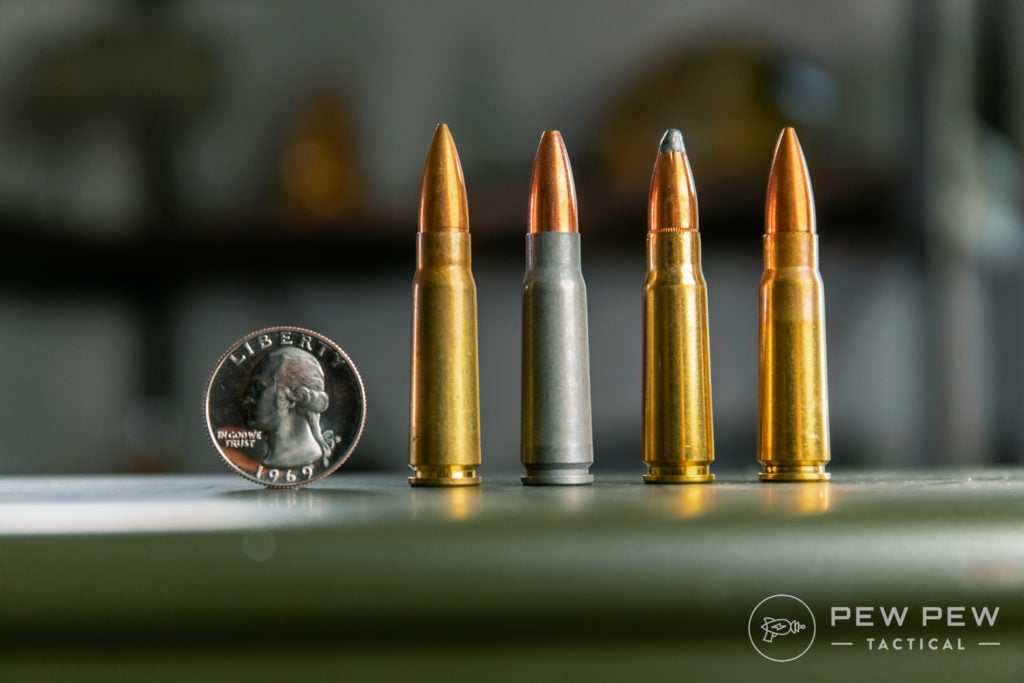
In soft point bullets, part of the lead is exposed at the tip. The softer lead is designed to flatten better when the bullet hits a target. But for the most part, ballistic tips have surpassed the performance of soft points.
Shotguns
The most popular sized shotgun round is the 12 gauge.
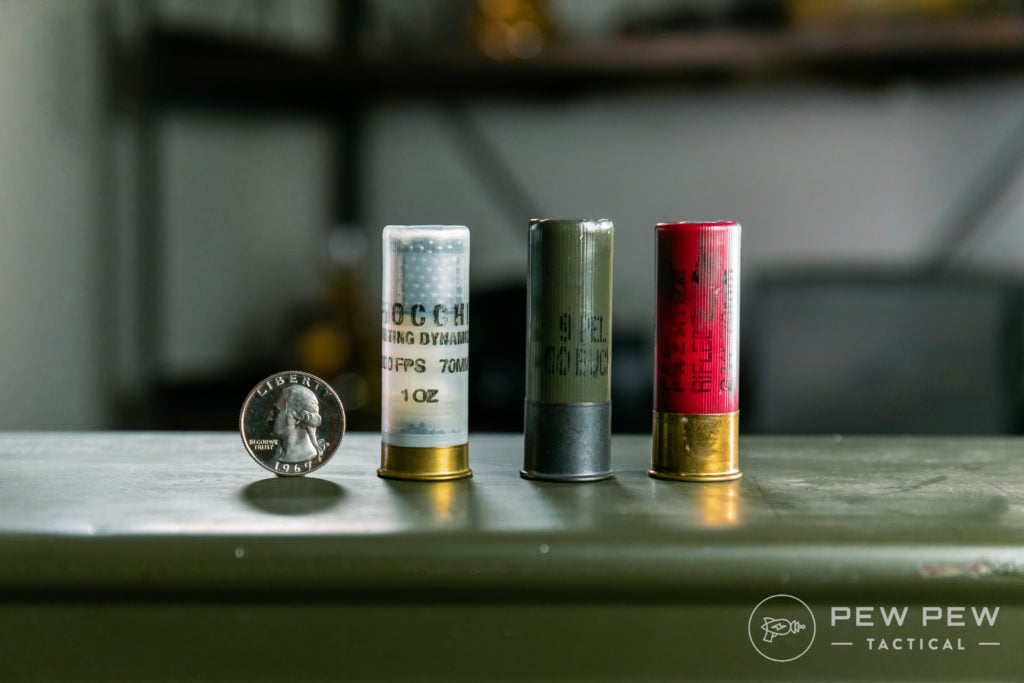
Recoil can vary from moderate to high based on round.
Shotgun ammunition is the most versatile with three main types of loads.
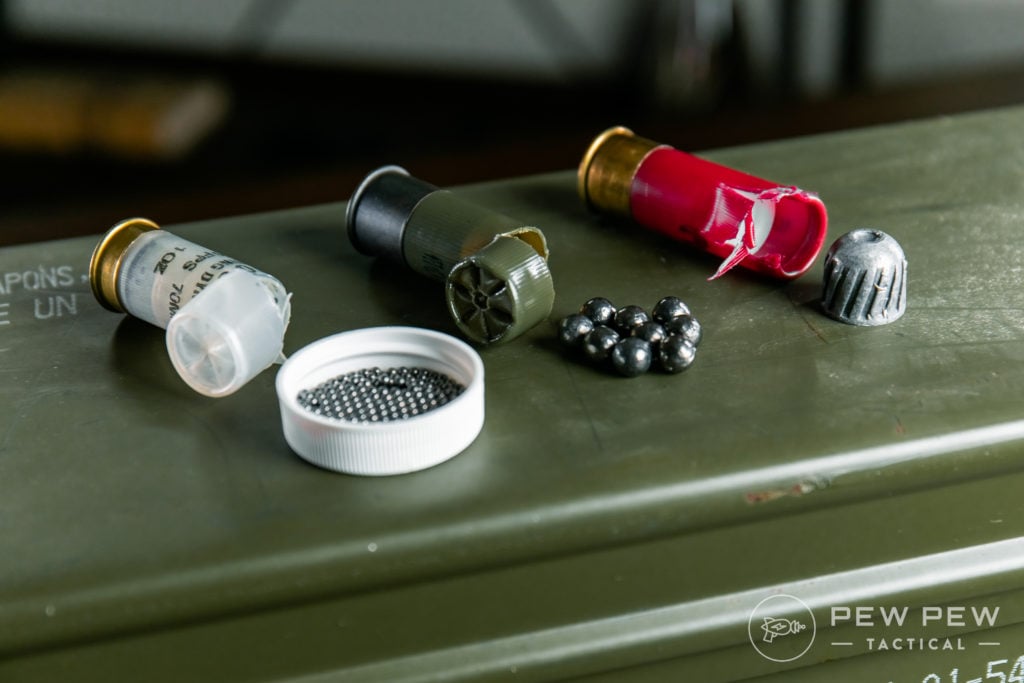
Bird Shot
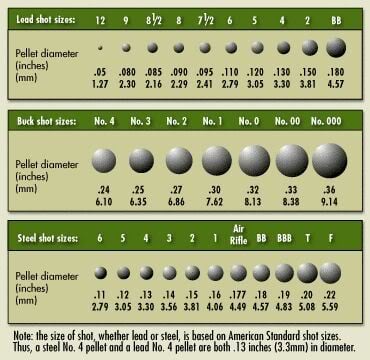
Birdshot consists of the top row and is pretty small pellets numbering in the dozens in each shell.
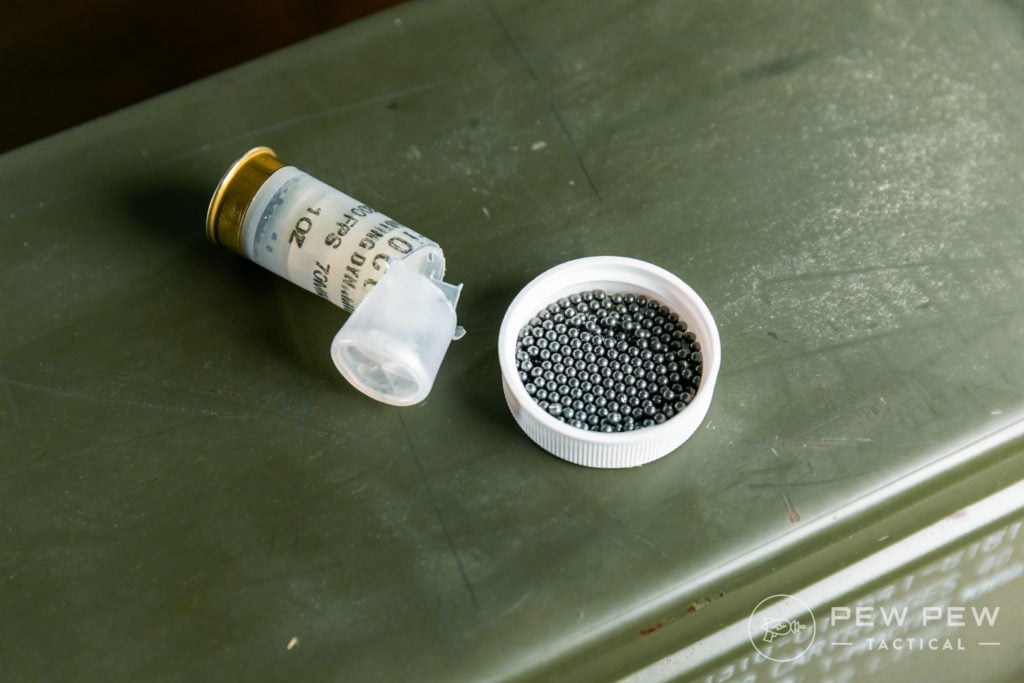
Great for hunting birds and blasting clay pigeons, but not the best for home defense.
Ok recoil.
Buck Shot
The overall best home defense round is buckshot. 00 (“double-aught”) is the go-to load.
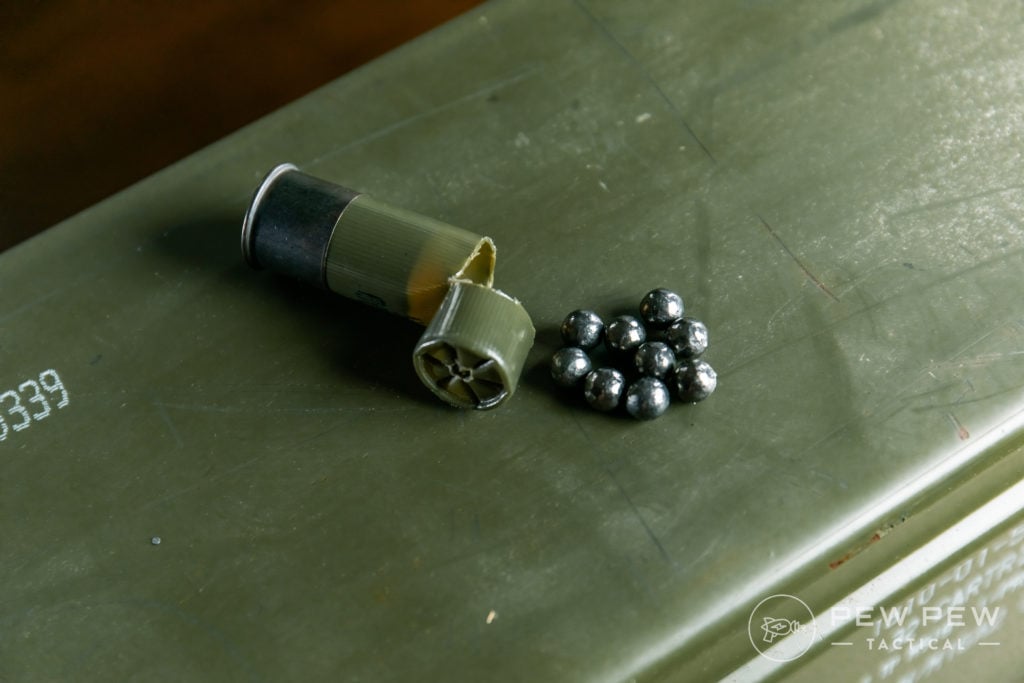
It’s nine solid lead balls the same diameter as the 9mm handgun bullet.
Much more recoil usually…but you can also find reduced-recoil buckshot rounds too.
Slugs
Slugs are single projectiles that are around 1 ounce of solid metal that really bring the hurt.
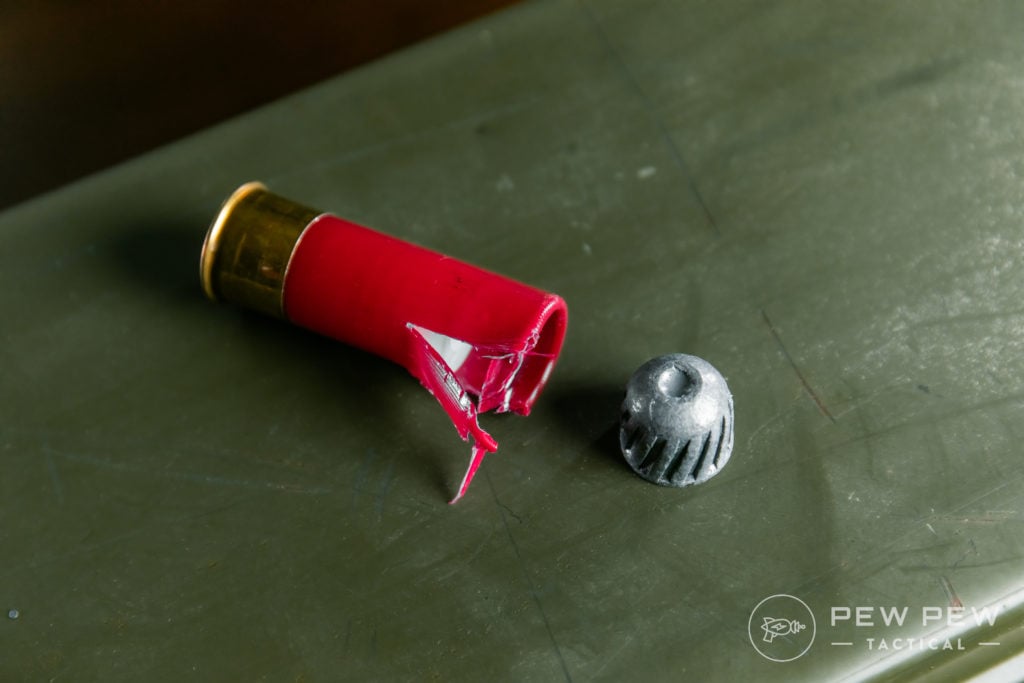
However, they don’t have the spread of birdshot or buckshot. But, in the hands of a solid shooter, they can be accurate up to 100-yards.
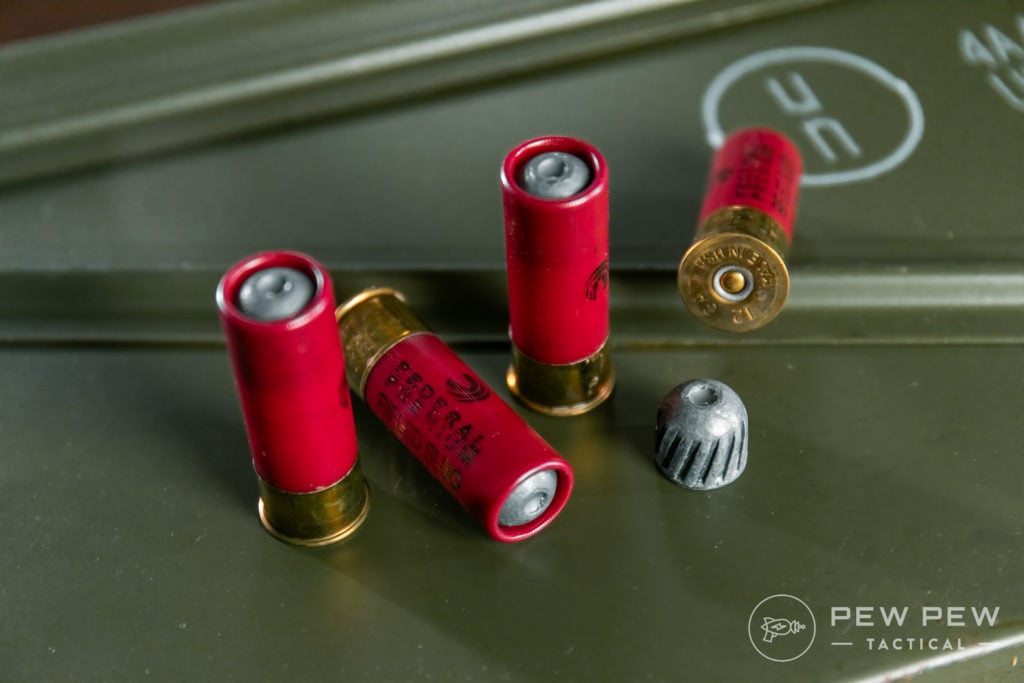
For more info:
Components of Common Cartridges
What makes up a cartridge?
Here are just a couple of breakdowns of super popular calibers. You can see the difference in powders & bullets for each type.
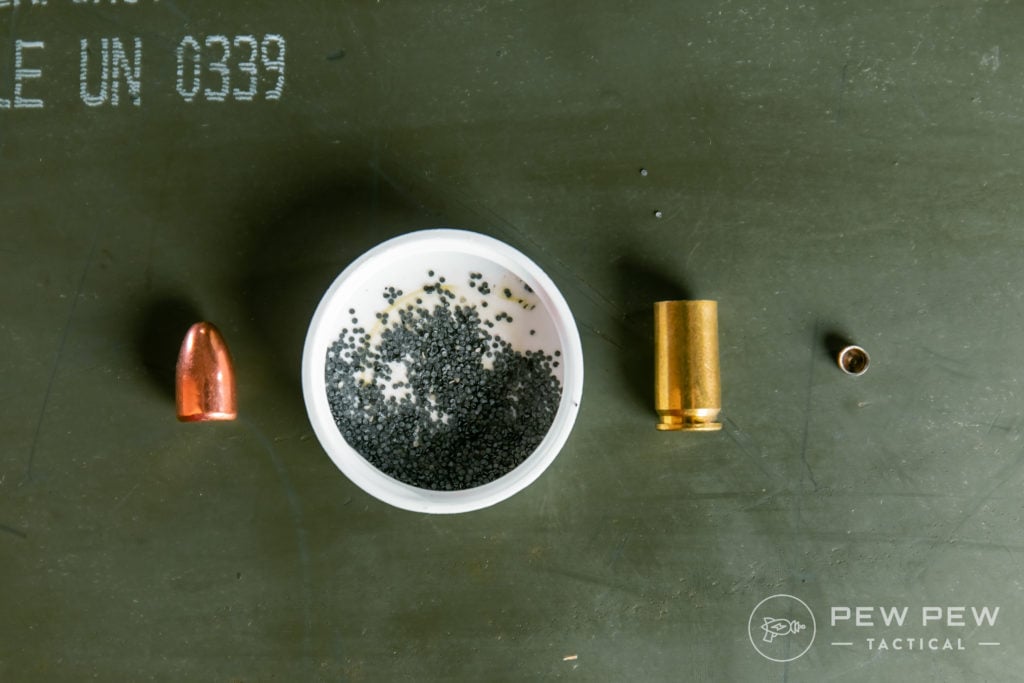

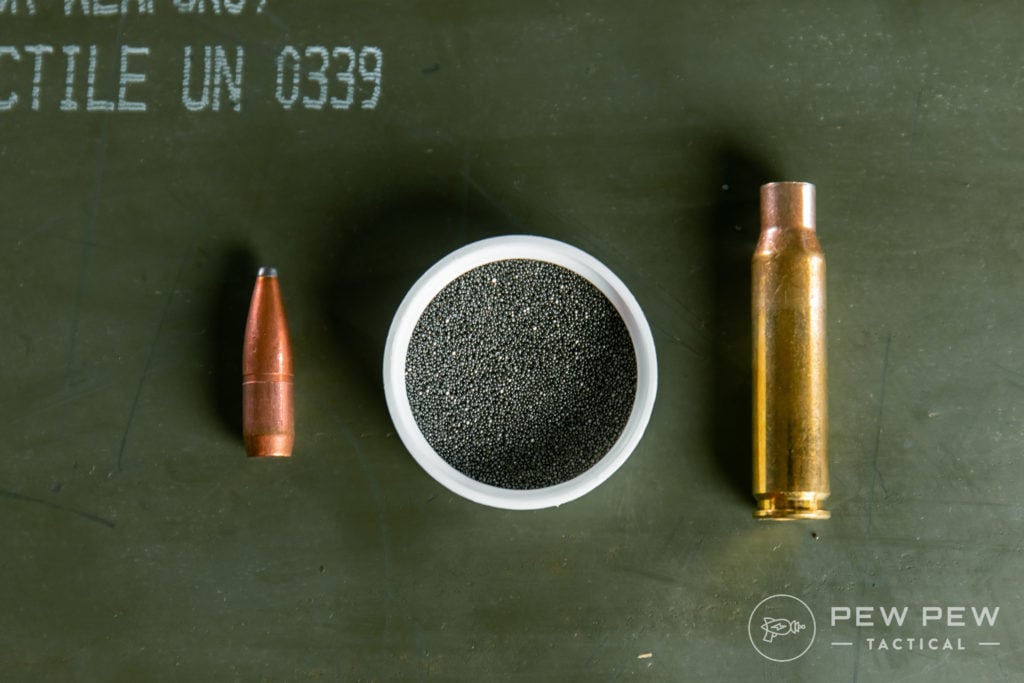
Conclusion
There you have it…now you’re a bullet pro!
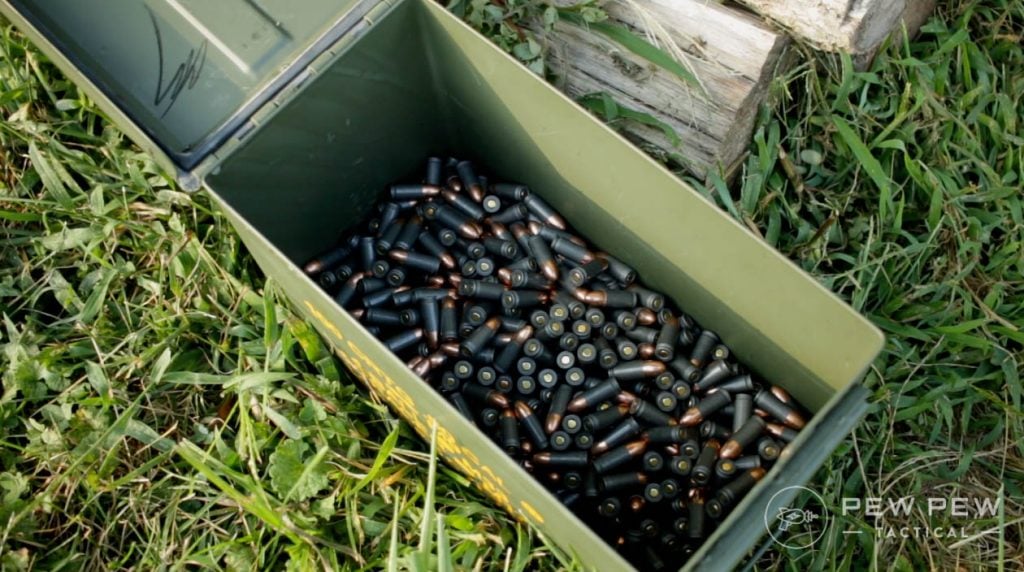
Continue on with a deeper dive into Popular Handgun Calibers, Popular Rifle Calibers, or the difference between Steel Cased and Brass Ammo…or head on over to see where to buy some Ammo Online.
And if an expertly created beginner handgun course is what you’re looking for…check out Gun Noob to Gun Slinger.
